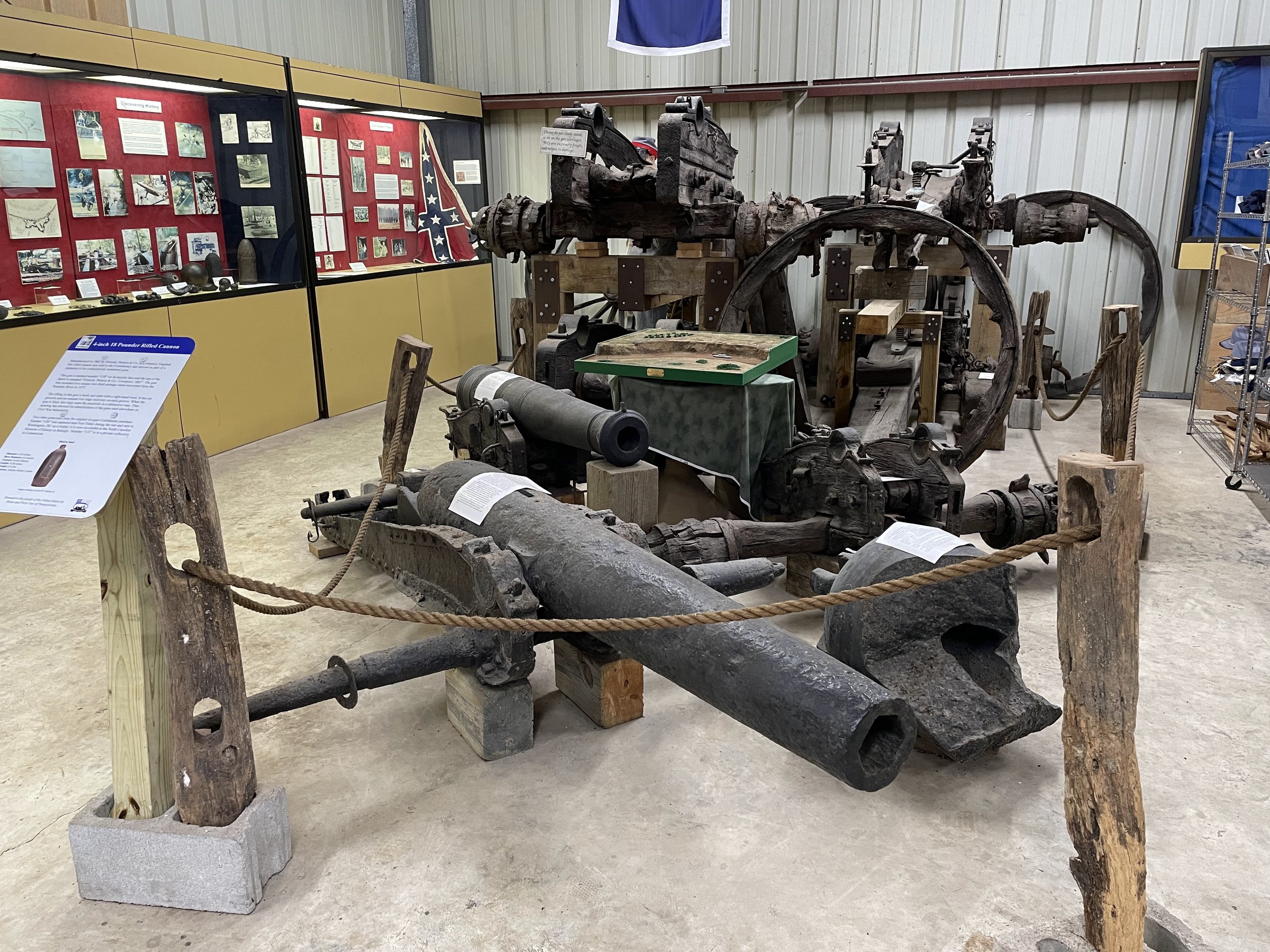4-Inch Fawcett Preston Rifle at Fort Branch
4-Inch Fawcett-Preston Rifle (or 4-Inch Blakely Rifle) Number 138 is displayed at Fort Branch near Hamilton, North Carolina. In the background of the photo are a 4.62-Inch Gibbon and Andrews Rifle, a Model 1819 24-Pounder Siege and Garrison Gun, and a Banded and Rifled 32-Pounder of 57 Hundredweight.
A 4-Inch (or 18-Pounder) Rifle manufactured by Fawcett, Preston, and Company in Liverpool in 1862 is displayed at Fort Branch Civil War Site near Hamilton, North Carolina. This cannon, marked by the manufacturer Number 138, was one of six identical guns ordered for the Confederacy. Number 136 is displayed in Raleigh, North Carolina. Number 137 survives in private hands.
The cannon in Raleigh is identified by an adjacent sign as a “Blakely” cannon. Fawcett, Preston, and Company made many cannon designed by former Royal Artillery Captain Theophilus Alexander Blakely. Many of these cannon are marked “Blakely’s Patent” - a marking that is missing from the cannon in Raleigh and at Fort Branch. Ripley identifies this cannon as a “Probable Blakely” (pg. 152). While noting the possible connection to Blakely, I would follow Fort Branch and identify this as a Fawcett-Preston Rifle.
Fort Branch was constructed on the Roanoke River in 1862 to prevent United States forces from moving up the Roanoke from Elizabeth City towards the strategic railroad bridge at Weldon. In April of 1865, the fort’s cannons were pushed into the river as the fort was abandoned. While some of the cannons may have been recovered by the US Navy at the end of the war, in the 1970s seven intact cannons, with portions of their original carriages, were recovered from the river. Please see the fort’s website for many more details about the construction and restoration of the site and its artifacts.
4-Inch Number 136 was used as part of a Flying Battery providing mobile defense against US Navy warships until it was captured by Rear Admiral Lee’s forces in August of 1863. A 4-Inch Rifle does not seem to have been part of the listed armament of Fort Branch in 1864. I suspect that, like Number 136, Number 138 may have been used in this mobile defensive role elsewhere on the Roanoke River or the North Carolina coast at some points in its history. Whatever its earlier service, it ended the war at Fort Branch.
While Number 138 certainly shows the effects of 110+ years on the bottom of the Roanoke River, it survives with the main portion of its original carriage and as part of an exceptional collection of Confederate Artillery from a single fortification. (Additional posts of Fort Branch and its cannons will be forthcoming.)
Interpretive sign about 4-Inch Fawcett-Preston Rifle Number 138 at Fort Branch
18-Pounder Blakely Shell (left) and 4.62-Inch Projectile for the Gibbons and Andrew Rifle (right)
Additional information displayed on the barrel of Number 138 at Fort Branch
Display on the war-time armament of Fort Branch
Additional photos of 4-Inch Fawcett-Preston Rifle at Fort Branch (an iron six-pounder and the remains of original carriages and other artifacts may be seen in these photos).
4-Inch Fawcett-Preston Rifle Number 136 displayed in Raleigh, North Carolina








